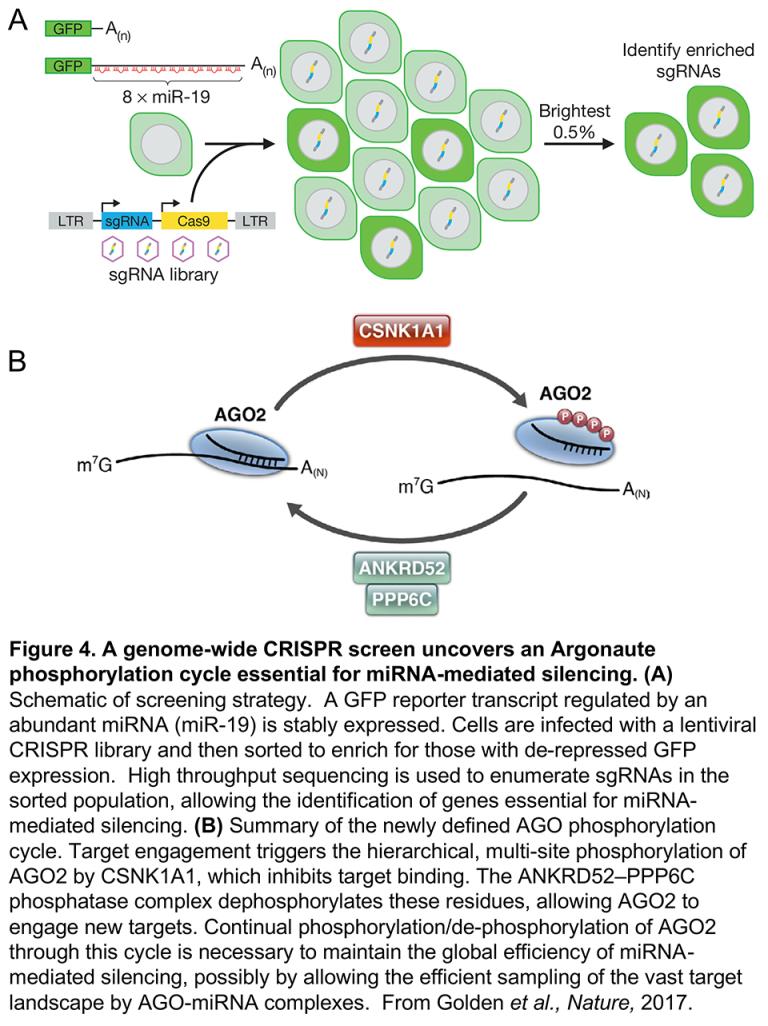Application of high-throughput approaches to interrogate RNA biology
CRISPR-mediated genome editing is revolutionizing all aspects of biological inquiry. One of the most exciting applications of this technology is its use in high-throughput screens to interrogate phenotypes and pathways in an unbiased manner. Our laboratory has developed the complete experimental and computational infrastructure to employ this methodology to dissect broad questions in RNA biology and, more generally, cancer biology. We are currently applying this strategy to perform genome-wide loss- and gain-of-function screens to investigate noncoding RNA mechanisms and functions as well as to dissect diverse post-transcriptional regulatory pathways.
As an example of how we utilize genome-wide CRISPR screens to dissect regulatory pathways of interest, we recently applied this method to study the miRNA pathway (Golden et al., Nature, 2017). By generating a sensitive GFP reporter that is tightly regulated by a miRNA, we were able to perform a comprehensive genome-wide screen to identify new factors that are essential for miRNA-mediated repression (Figure 4). Unexpectedly, this revealed a critical role for phospho-regulation of Argonaute (AGO) proteins, the key effectors in the miRNA pathway. Our studies demonstrated that when AGO engages target mRNAs, it becomes a substrate for the kinase CSNK1A. Phosphorylation on a set of highly conserved residues triggers target release, whereupon the ANKRD52-PPP6C phosphatase complex rapidly dephosphorylates AGO. We believe that this phosphorylation cycle allows AGO to efficiently move from target to target, enabling miRNAs to efficiently navigate the target landscape in order to productively silence a vast excess of target mRNAs. Accordingly, interrupting this phosphorylation cycle by mutating the kinase or phosphatase, or by mutating the AGO phosphorylation sites, significantly impairs miRNA-mediated silencing. We are intrigued by the possibility that this phosphorylation cycle may also be used to control the activity of the miRNA pathway in physiologic settings or in disease states, a possibility that we are currently investigating.
